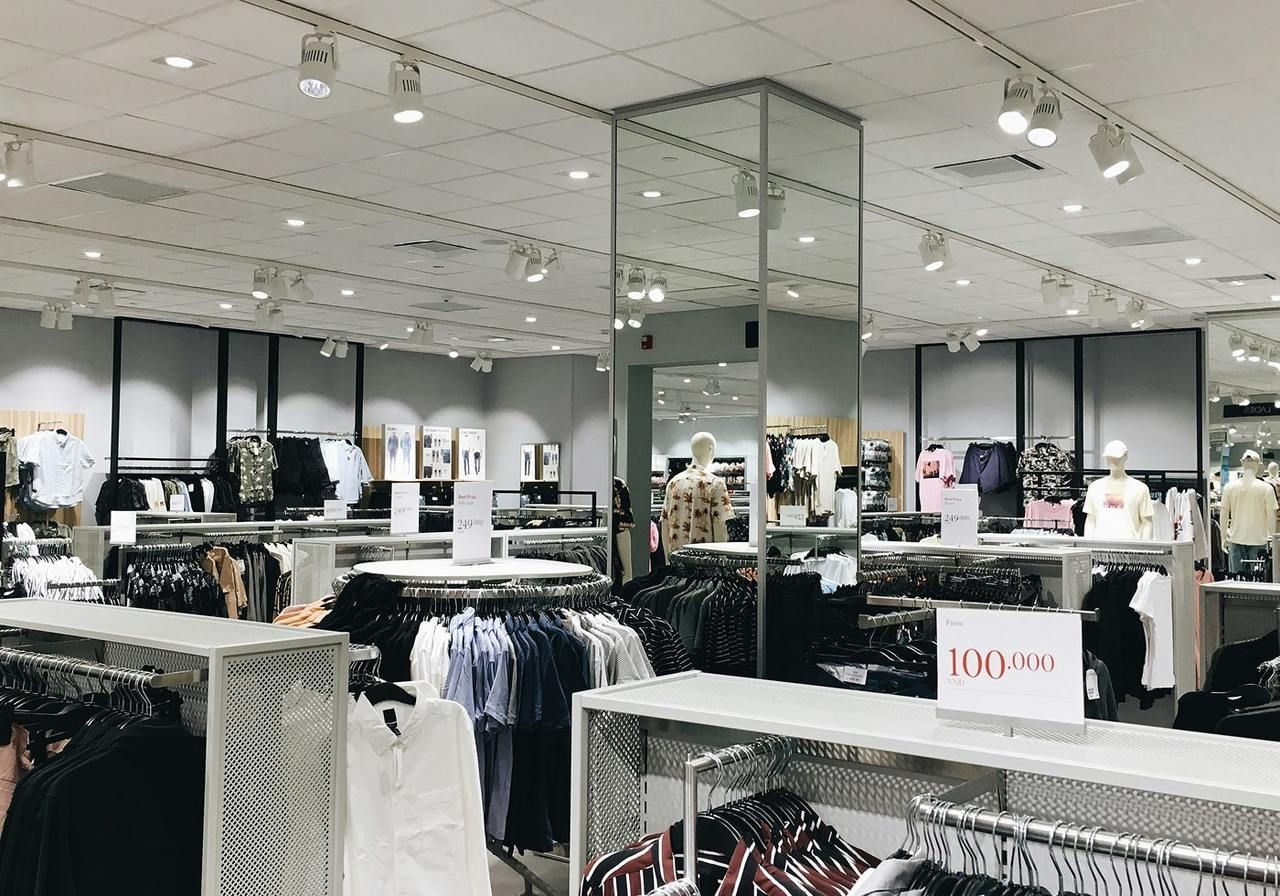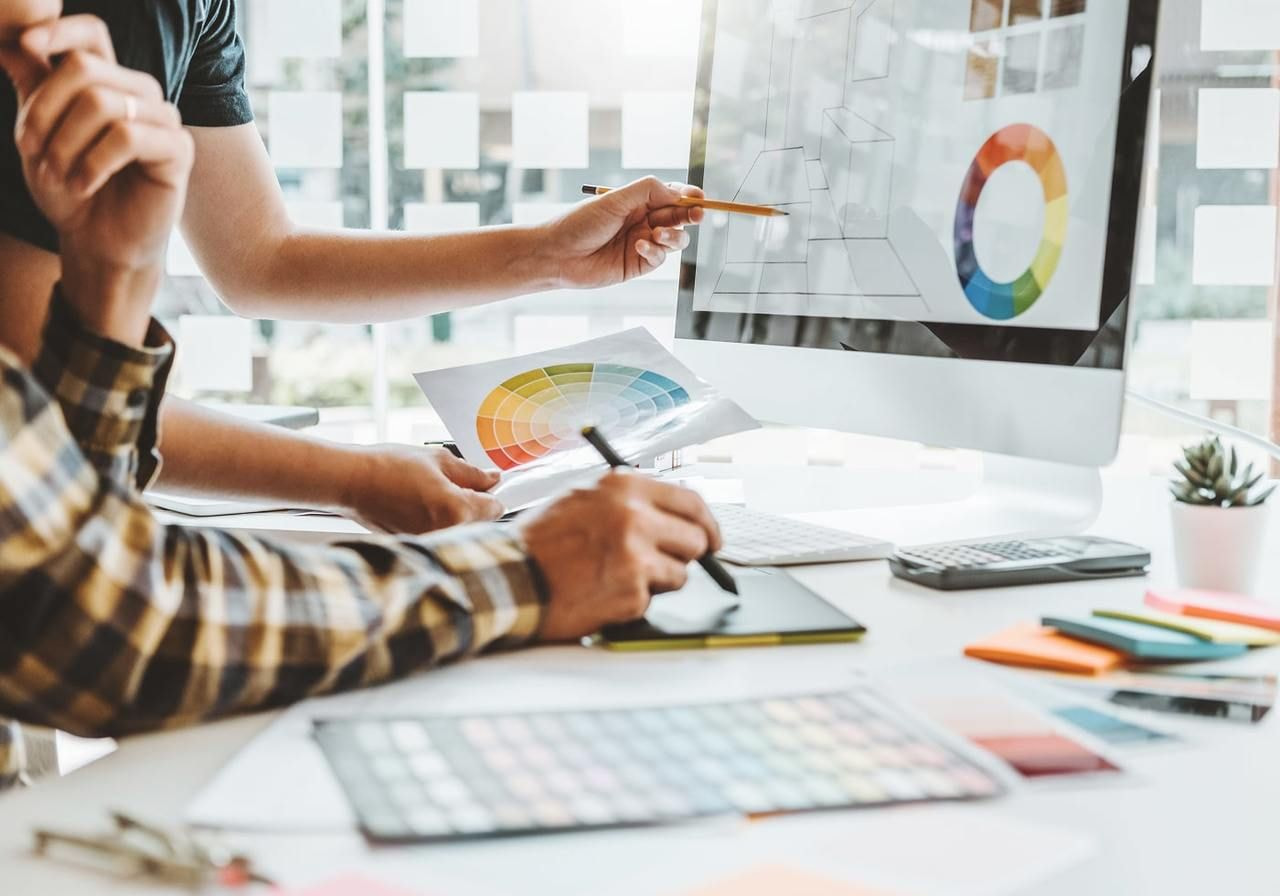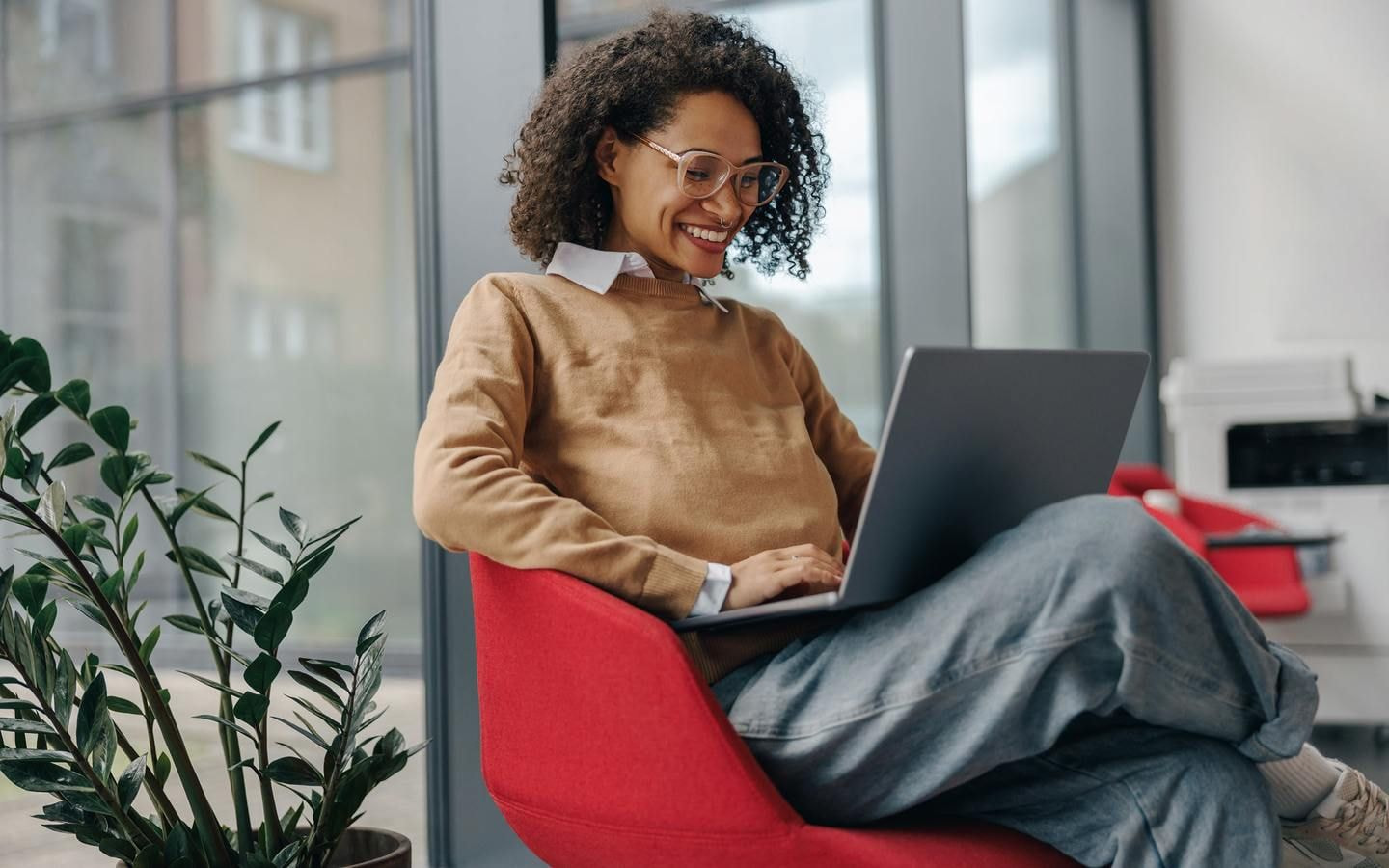Table of contents
Want to launch a clothing brand from your laptop? This step-by-step guide shows you how to start an online clothing store with low upfront costs, no inventory, and tools that make it easy to sell online.
Whether you’re starting a clothing line as a side hustle or building a full-scale fashion brand, you’ll learn how to create designs, pick the right business model, and launch a successful online store from scratch.
Main takeaways
-
Pick a business model (Print on Demand, dropshipping, or wholesale) that fits your goals, budget, and experience level
-
Use real data and customer research to select products people want to buy, not just what you like
-
Design your products with free tools, professional freelancers, or Printful’s Design Maker
-
Set up your store with intuitive navigation, smart pricing, search engine optimization (SEO), and platform-appropriate visuals
-
Promote your store with social media, email, and influencers, and scale using product data, not guesswork
Why now is the perfect time to start an online clothing business

If you’ve been sitting on a killer clothing idea, this is your sign to hit Go. Between rising eCommerce sales, growing demand for self-expression, and the rise of Print on Demand (POD), there’s never been a better time to launch an online clothing store.
-
Online fashion is booming: The global online fashion industry is projected to reach $1.2 trillion by 2030.
-
POD is picking up steam: The print-on-demand market is forecasted to grow by 26.1% annually between 2023 and 2030.
-
Social selling is rising: Social commerce is steadily growing, especially in fashion and beauty.
-
Streetwear is having a moment (again): Streetwear still dominates among consumers, especially in North America. The global streetwear market is set to reach $276.29 billion by 2033.
-
People love small brands: Studies show that younger shoppers are moving away from big fashion brands toward brands that offer better products, stronger values, or a more personal shopping experience.
Whether you’re building your fashion empire from a dorm room or selling clothing between gigs, now’s the time to turn that vision into a storefront.
There’s room in the market for your vision. Let’s turn it into a successful online clothing store.


How to start a clothing brand online in 8 steps
Take your idea for a clothing brand from sketch to storefront with these 8 practical steps.
1. Choose your clothing niche and target audience
Clothing niche
A clothing niche is a specific style, theme, or audience your brand focuses on. Instead of selling clothes to everyone, you pick a clear direction, making it easier to stand out and attract loyal fans.
Some fun niche ideas:
-
Cottagecore dresses for plant moms
-
Bold graphic tees for indie horror fans
-
Retro workout sets for ’80s lovers
-
Minimalist streetwear for tech bros
To find your niche, start with what you care about – hobbies, values, subcultures, aesthetics. Then, conduct market research to assess demand:
-
Use Google Trends and Semrush to compare search volume for different styles
-
Search Etsy, Instagram, and TikTok for recurring themes or gaps
-
Browse Reddit threads (like r/streetwear or r/femalefashionadvice) to see what people want but can’t find
Target audience
You have to understand your target market to create products your audience wants. What age group are your target customers? What are their interests? Where do they hang out online?
Tools like AnswerThePublic, Meta Audience Insights, and your TikTok feed will help.
The more specific you get, the easier it is to design products, write listings, and market your store online.
2. Decide on a business model

There’s more than one way to run a successful online clothing store. Your business model affects everything – from startup costs and inventory to fulfillment, shipping, and how much control you have over your brand.
Here are the 3 most common options.
Print on Demand
Print on Demand (POD) is one of the fastest, lowest-risk ways to start your own clothing line. You upload your custom designs to a platform like Printful, choose which products to sell (like t-shirts, hoodies, or leggings), and list them on your online store.
When a customer orders from you, Printful automatically prints, packs, and ships the item directly to them – no inventory or shipping on your end.
Pros:
-
Zero upfront inventory costs
-
No storage, shipping, or fulfillment to manage
-
Easy to test new designs or fashion trends
-
Great for launching side hustles or scaling gradually, risk-free
Cons:
-
Lower profit margins than bulk or wholesale production
-
Limited control over product quality, unboxing, and delivery speed
Best for: Designers, creatives, and first-time entrepreneurs who want to launch a clothing line fast, keep costs low, and avoid managing stock. POD is ideal if you want to focus on branding, new products, and social media advertising instead of operations.
Dropshipping
Dropshipping lets you sell online without holding inventory or customizing the products. Instead, you choose clothing items and other products from a supplier’s catalog and add them to your store. When someone orders, the clothing manufacturers ship the product straight to your customer.
Read more: Print on Demand vs. dropshipping: The similarities and differences explained
Pros:
-
No inventory, printing, or shipping required
-
Fast store setup with thousands of product options
-
Low financial risk to get started
Cons:
-
Limited product differentiation – many online businesses sell the same items
-
Lower-quality control and customer experience
-
High competition and lower profit margins
Best for: eCommerce store owners curating trending styles and building marketing-driven clothing businesses rather than original fashion labels. If your goal is to test demand, build quickly, or automate everything, dropshipping is for you.
Wholesale
Wholesale involves buying clothing in bulk from clothing manufacturers, storing it yourself (or at a fulfillment center), and handling shipping and returns. You may purchase blank apparel to customize it or ready-to-sell items to resell under your clothing brand.
Pros:
-
Higher profit margins per item
-
Full control over quality, packaging, and delivery
-
Ability to create a premium, branded experience
Cons:
-
Requires significant upfront investment in stock
-
Risk of over-ordering or unsold inventory
-
You must manage warehousing, fulfillment, and returns
Best for: Experienced entrepreneurs or fashion brand owners with a clear identity, budget, and audience. Wholesale is ideal if you want complete creative control, faster shipping, and stronger brand presentation.
Once you choose your business model, draft a simple business plan for your clothing brand. It doesn’t need to be formal; just outline your niche, target customer, startup costs, and marketing strategy.
A clothing business plan will help you stay organized and build your store faster.
3. Pick a sales channel

Your sales channel determines how potential customers find you, how much control you have over the experience, and how quickly you can start a clothing brand. Here are the main options.
eCommerce platforms
eCommerce platforms let you build a custom online store under your own brand. Think of them as your flagship store – you control the layout, branding, and shopping experience. Unlike marketplaces, you’re not selling among competitors on the same page. You get your own eCommerce website.
Pros:
-
Full control over design, branding, and pricing
-
Tons of apps and features to grow your store
-
Strong long-term brand-building potential
Cons:
-
Monthly fees and paid themes/apps
-
Requires upfront setup and maintenance
Top platforms: Shopify, Wix, WooCommerce, BigCommerce
Best for: Fashion entrepreneurs who want a professional eCommerce website with custom branding. Ideal if you’re serious about scaling and building long-term recognition in the clothing industry.
Read more: Best eCommerce platforms in 2025: Top 11 contenders
eCommerce marketplaces
eCommerce marketplaces are like online malls where many sellers list products side by side. Shoppers browse by category, not brand, so visibility depends more on trends, SEO, and reviews than custom design. Marketplaces give your online boutique access to a built-in audience.
Pros:
-
Immediate access to millions of shoppers
-
No need to design or maintain a website
-
Easy to launch and start selling quickly
Cons:
-
Heavy competition on product pages
-
Limited branding and pricing flexibility
-
Platform fees and listing rules vary
Top marketplaces: Etsy, Amazon, eBay
Best for: Sellers looking for fast exposure and low barriers to entry. Marketplaces are great if you’re testing a product, selling trend-driven items, or want to pair them with a branded site for more reach.
Read more: Top 9 best online marketplaces for print-on-demand sellers
Standalone options
Standalone options give you a simple way to launch a store without committing to a full eCommerce platform or marketplace.
These lightweight solutions, like Printful’s Quick Store, let you create a storefront quickly and with minimal effort: no coding, plugins, or learning curve.
Read more: Launch an online store in 10 minutes with Printful’s Quick Stores
Pros:
-
Free or low-cost entry point
-
Fast setup with no third-party integrations
-
Ideal for small catalogs or test launches
Cons:
-
Limited customization and marketing tools
-
Not suitable for large-scale operations
-
Less powerful than full eCommerce platforms
Top names: Printful’s Quick Store, Printify’s Pop-Up Store
Best for: Beginners, side hustlers, or creators testing their first clothing line. If you want to start your fashion brand today without the tech hassle, standalone stores are a low-stress way to start selling. You can always upgrade later.
4. Work on your brand identity
Your brand identity is the impression potential customers get when they see your store, scroll your post, or open your package. When you launch an online clothing store, a clear identity makes your shop more than just a collection of products.
Here’s how to build a brand identity that lasts.
Simple, memorable business name
Think short, easy to say, and hard to forget. If someone can’t spell or search it, they won’t find you. Skip the filler words: no “The” or “Shop.” Tools like Namelix, NameSnack, or Wordoid will help you create a business name for free.
Before you commit, Google it, check domain availability, and scan Instagram and TikTok for duplicates.
Logo that works everywhere
Your logo has to look clean on a hoodie label and in your Instagram pic. Keep it bold, readable, and avoid clutter. Stick to 1-2 colors max. This will ensure it looks good in every size, format, and printing technique.
Platforms like Canva, Shopify’s Logo Maker, or Looka are great for fast, polished results, even if design isn’t your thing.
Visual consistency
Choose brand colors, fonts, and imagery that reflect your clothing brand’s personality – and use them consistently. Whether you’re bold and graphic or soft and vintage, keep the look unified across your eCommerce site, social media, and packaging.
Create a brand board in Canva or Pinterest to keep your visual identity consistent.
Read more: Color psychology in eCommerce and branding
Have a clear, genuine tone
Write like a real person. Whether witty, rebellious, or calm and curated, keep that voice consistent across product pages, emails, and social media bios.
Your brand identity doesn’t need to be fancy. It just needs to be clear, consistent, and unmistakably yours.
Read more: Small business branding: 6 Steps to build a standout brand in 2025


5. Select products to sell online

What you sell on your online clothing store shapes everything: from who finds your store to whether they hit “buy.” Your job is to figure out what your target audience wants and deliver it with your own spin. That starts with understanding the target market demand.
Choose products based on demand
To sell what people want, think like your customers. For example:
-
A 28-year-old yoga instructor isn’t typing “eco hoodie,” they’re searching for “organic cotton zip hoodie” or “minimalist loungewear set”
-
A 35-year-old dad who’s into retro gaming isn’t typing “graphic tee,” they’re looking for a “pixel art t-shirt” or “90s arcade shirt”
If you’re starting a new clothing line with Printful, check out our Best-selling Products page to see which are the most popular.
Here are three tactics to choose products your audience will actually buy:
-
Watch how your potential customers actually shop. Go to TikTok, Etsy, or Instagram. Use niche-relevant hashtags and scroll. What terms appear in titles or captions? What do people comment on?
-
Reverse-engineer real listings. On Etsy or Redbubble, look at bestsellers in your niche. What words repeat in the titles, tags, and descriptions? What features are highlighted (e.g., soft feel, oversized fit, eco fabric)?
-
Borrow the language. Align your product listings and online marketing with the exact phrases shoppers already use. That’s how you meet search intent.
Start lean with 5-10 products that fit your audience and margin goals. If your niche values comfort and self-expression, go with unisex tees. If you’re targeting fashion-forward Gen Z, cropped pieces or oversized streetwear will work better.
Spot market trends worth following
Don’t chase the hype – focus on trends and products your audience actually wants (and is willing to pay for). Here’s how to spot them:
Use Google Trends. Search specific product phrases like “black cat vintage zip hoodie” or “eco crop top.” Filter by your country and the past 12 months. Look for steady growth or sustained interest, not short-term spikes.
On TikTok, search niche hashtags like #CatMomFashion or #90sBabyTops. Note which products and fits appear in top-performing videos.
Check Etsy autocomplete. Type the same phrases into Etsy’s search bar. The suggestions come directly from what online shoppers are typing.
The terms reappearing across platforms signal real demand. Aim to find what people already want and offer it in your brand’s style.
Get to know the fulfillment techniques
Your printing method directly affects how your designs look, how your products feel, and the impression on your customers.
DTG (direct-to-garment) printing
This is best-suited for 100% cotton or cotton blends, with most of it being cotton. Looks stunning on products like t-shirts, sweatshirts, and hoodies. DTG allows detailed, full-color prints with soft texture. Great for designs with gradients, detailed artwork, or photos.
Read more: What is DTG printing? Your ultimate guide
DTF prints onto film and transfers onto fabric, which gives you more flexibility than DTG. It works well on blended fabrics and dark colors, holds vibrant tones, and offers solid durability. The texture is thicker, so it’s better for bold graphics than intricate detail.
Read more: What is DTF printing and how does it work?
Sublimation (all-over) printing
The design is infused into the fabric, so it won’t peel, crack, or fade. This is ideal for big designs and patterns. Unlike DTG, sublimation works on polyester, so it’s a favorite for activewear and leggings.
Read more: 22 Best-selling sublimation products you don’t want to miss out on
Use this when you want a textured, elevated look. Works best for simple logos or clean shapes on items like hats, polos, or jackets. Embroidery lasts long and adds value but isn’t a good fit for fine details.
Read more: How to create the perfect embroidery file
6. Create designs for your own clothing line

This is where your clothing line starts to take shape. In this step, you’ll create or source the designs for your products. Whether you’re an artist, beginner, or somewhere in between, there’s a method that fits your skill level, budget, and timeline.
Here are four ways to design your own clothing line:
Use design software
If you want full creative control, use graphic design software. Options range from beginner-friendly tools to professional software:
Digitize your own artwork
If you already have hand-drawn illustrations, paintings, or lettering, scan them at 300 DPI or higher. Then clean up or convert your work using tools like Adobe Capture, Linearity (previously Vectornator), or Photoshop.
Export your final design as a PNG with a transparent background for best results in print.
Read more: Top 12 best t-shirt design software options in 2025
Hire a freelance designer
If you have an idea but need someone to bring it to life, hire a professional through Fiverr or Upwork. Look for freelancers with experience in apparel. Share references, color preferences, and product templates to make the collaboration smooth and effective.
Get a 10% discount on freelance services on Fiverr with the code PRINTFUL25.
Use Printful’s free Design Maker
If you’d rather keep it simple, Printful’s Design Maker lets you create clothing designs directly in your account for free.
-
Choose from a large library of clipart, fonts, illustrations, and ready-made designs
-
Upload custom graphics, edit, and apply effects like curved text or background removal
-
Preview how your design looks on each product with true-to-life mockups
-
Use the files directly on your products or export for later
Read more: 11 Things you didn’t know Printful’s Design Maker could do
7. Set up your store for success
Once your designs are ready, it’s time to build your storefront and start publishing products. A well-structured store builds trust, helps people buy faster, and sets the tone for your brand.
Make your store easy to navigate
Your store should feel intuitive, not overwhelming. Group products into clear categories (like t-shirts, hoodies, or accessories) and keep menus simple. Avoid clutter.
Add an About page briefly explaining who you are and what your brand stands for. Include clear info on shipping, returns, and contact. Transparency builds trust, especially with first-time buyers. Every page should help your customer feel confident to shop online from you, not confused.
Read more: How to write an About Us page for a business
Price your products with intention
Start by calculating your base costs: the product itself, printing, shipping, and platform fees. Then, build in a healthy profit margin. Most successful businesses aim for a 30-50% margin.
For example, if your product costs $13 to fulfill, a price between $20-$25 leaves healthy room for profit. Depending on your audience, use round numbers or psychological pricing.
Psychological pricing works because $24.99 feels cheaper than $25 and can encourage more conversions – especially in competitive markets. In contrast, round numbers like $25 signal simplicity or premium value, which will resonate better with fashion brands targeting higher-end customers.
Test bundles, limited runs, or discounts to see what resonates.
Read more: Pricing guide for online sellers
Help people find your products with search engine optimization (SEO)
SEO helps your products show up where people are already looking. Every platform has different rules, but the strategy stays the same: use the exact terms your audience types when they shop.
If you use Shopify or a custom site, optimize product titles, meta descriptions, page URLs, and image alt text. Use simple, specific keywords that match what your customers would search for, such as “oversized graphic hoodie” or “organic cotton tank.”
On marketplaces, start by reading that platform’s seller guidelines. Most marketplaces outline exactly how to format titles, what keywords matter, and how search ranking works. Following these rules makes your listings more competitive.
SEO tools to use:
-
Google Trends: compare search interest for product terms over time and spot patterns tied to your niche
-
Keywords Everywhere or Ubersuggest: research keyword volume, competition, and related phrases to target high-intent search terms
-
eRank (for Etsy), Terapeak (for eBay), and Jungle Scout (for Amazon): great for marketplace sellers to analyze trending searches, top tags, and listing performance in real time
-
Platform analytics: track which listings get found and clicked, then apply that format across your store
Read more: What is SEO and how it works – A beginner’s guide
Use high-quality product photos
Strong visuals build trust and help shoppers imagine your products in real life.
Start with Printful’s mockups. They’re clean, easy to create, and great for consistency. For unique visuals, order samples and take your own photos. Use natural lighting, show multiple angles, and include real people wearing or using the product when possible.
Adapt your photos to the platform:
-
Amazon requires a plain white background for the main image
-
Etsy supports more creative, lifestyle photography
-
Shopify lets you define the full visual direction, so match your images to your brand aesthetic
High-quality photos make your online clothing store look professional and credible. More importantly, they reduce buyer hesitation and help convert traffic into sales.
8. Market and scale your small clothing business
The next step is marketing your online business so customers can find you, trust you, and buy from you. Below are proven ways to attract real customers, grow your visibility, and expand your own clothing line without wasting time or money.
Social media marketing
Social media builds brand awareness and drives real conversions. In 2024, 70% of users discovered new products on Instagram, and TikTok influenced nearly 40% of Gen Z’s buying decisions globally.
-
Post high-quality photos and Reels with styling tips or launch teasers
-
Use Stories for behind-the-scenes content, polls, and limited-time offers
-
Organize Highlights for FAQs, reviews, and featured products
TikTok
-
Share fast-paced videos showing your design process, packaging, or customer reactions
-
Use trending sounds, hashtags, and clear on-screen text
-
Keep it authentic – share raw, unscripted clips that feel real, not like ads
-
Create keyword-rich boards for each collection or aesthetic
-
Pin lifestyle imagery, moodboards, and shoppable product links
-
Schedule pins in advance using Tailwind or Pinterest’s own planner
Use email to drive repeat sales
Email consistently delivers the highest ROI in eCommerce marketing strategies. In 2024, stores earned an average of $36 for every $1 spent on email marketing. Plus, unlike social media, your list is entirely yours, making it one of the most reliable tools for long-term growth.
How to use email marketing for your own online store:
-
Add an email signup form to your storefront from day one
-
Offer free shipping on the first order, a discount, or early access to encourage customers to sign up
-
Use tools like Klaviyo or MailerLite to automate welcome flows, product launches, and cart recovery
-
Segment your list based on purchase history or interest
-
Keep emails short, visual, and focused on one clear CTA
Even with a small list, consistent email marketing builds trust and repeat sales – especially during product drops or seasonal campaigns.
Work with creators who can move products
In the competitive fashion industry, influencer partnerships are still one of the most effective growth tools to run a successful fashion brand.
The US influencer marketing spend is set to exceed $10 billion this year, with brands shifting toward nano and micro-influencers who connect authentically with their audience.
-
Search niche hashtags to find creators whose style matches your clothing line
-
Focus on micro-influencers with strong engagement, not just big follower count
-
Reach out with a short pitch and offer a free product or commission
-
Use personalized discount codes or tracked links to measure results
Creators who already wear styles similar to yours will promote your clothing line more naturally – and more effectively – than paid ads.
Scale what’s already working
Scaling should feel like momentum, not pressure. Use analytics to find your bestsellers, then improve your clothing line strategically:
-
Re-release winning designs in new colors
-
Test alternate print placements
-
Add upsells like hats, totes, or accessories
-
Retire products that don’t sell
Build your own fashion brand with Printful

Whether you’re launching your first streetwear label or scaling an online boutique fashion line, Printful makes it easy to enter the clothing industry.
You don’t need inventory, upfront investment, or a warehouse – just your designs and drive. Printful handles all your orders as they come in, from production to shipping, so you can focus on growing your clothing business online.
-
Zero upfront costs: You only pay when a customer orders, keeping your launch budget-friendly and low-risk
-
Hands-off fulfillment: Printful automatically makes and ships every order, so you can focus on designing and attracting online shoppers
-
No inventory waste: Sell without overstock, storage fees, or leftover products – perfect for trend-based fashion drops
-
Unlimited product testing: Try new styles, colorways, products, techniques, or collections with zero limitations or risk
-
Custom branding options: Add branded labels, packing slips, and inserts to give your fashion line a polished, professional feel


How to start an online clothing store: FAQ
It depends on your business model. With the print-on-demand model, you can start for as little as $50 – just enough to order samples or pay store platform fees.
Wholesale or custom production will cost more upfront for inventory, packaging, and storage.
To start a new clothing line online with Printful, pick a niche, design your clothing items, set up your online store, and start selling.
Selling clothes online with Print on Demand eliminates startup and monthly fees and logistical headaches. Printful takes care of your orders while you focus on growing your business.
In most cases, yes – depending on your state or country, you’ll need a general business license or permit. If you plan to operate as an LLC or corporation, you must register your business officially. Always check local regulations for business licenses and other legal matters to stay compliant.
Launch a successful clothing brand today!
You have the vision, now you’ve got the steps. Knowing how to start an online clothing store means you can pick the right business model, design products that sell, and launch a store that reaches customers.
Design what you love, launch strategically, and let Printful’s POD magic do the rest. Turn your clothing brand idea into a store customers can shop in today.
Read next:

Karlina is an SEO Content Writer specialist at Printful. As a firm believer in attitude over aptitude, Karlina gives her 100% whenever she works on something new. Karlina spends her free time reading, traveling, and doing yoga.





